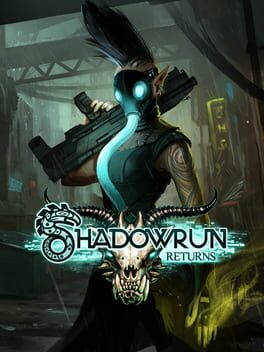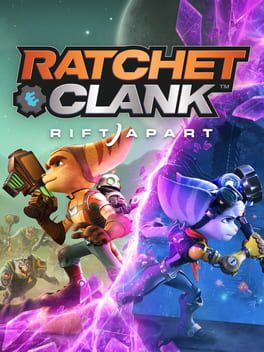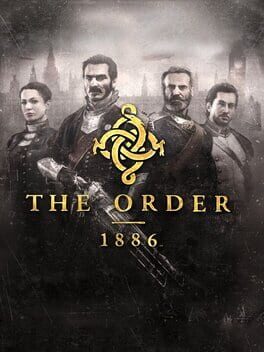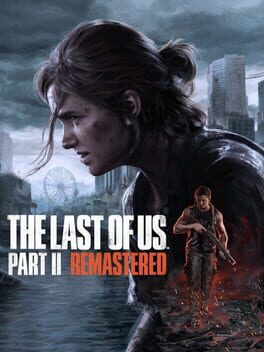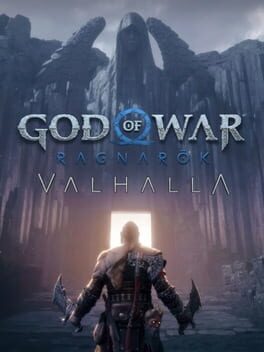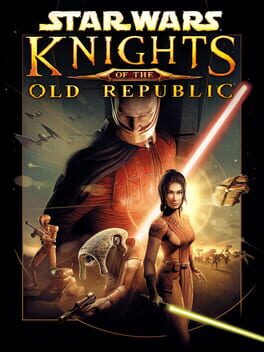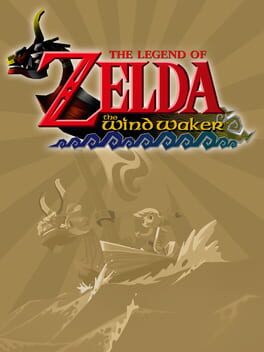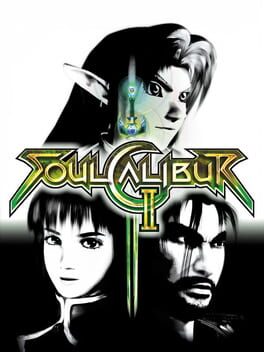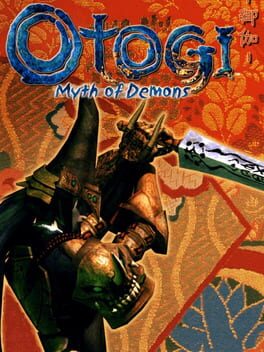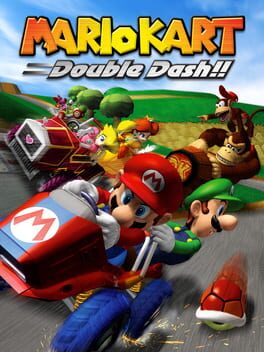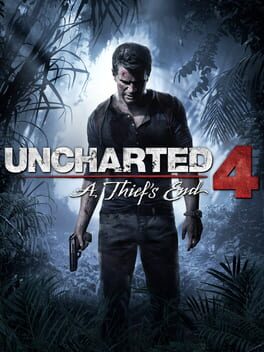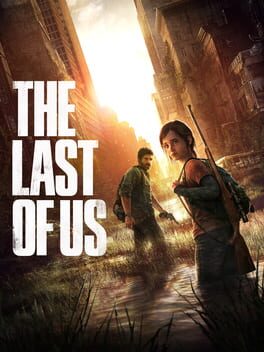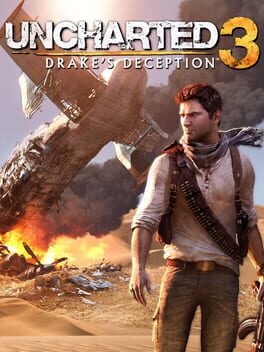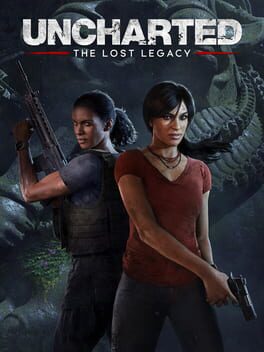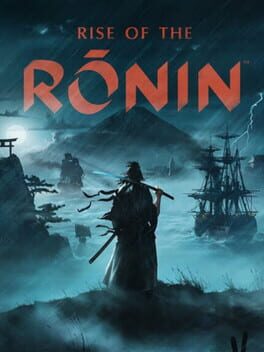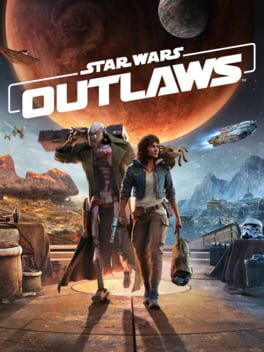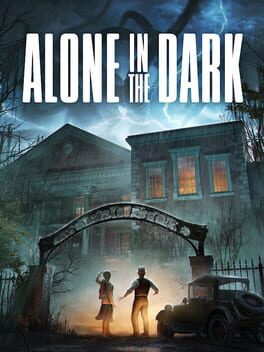MIKEYMO
7 reviews liked by MIKEYMO
Shadowrun Returns
2013
I remember playing this game around the time of its launch for a couple hours or so, being mesmerized by its brand of hard boiled sci-fi dystopia. It's not hard to see why I was so enthralled by it back then: the first 5-6 hours successfully introduces an interesting world where the advancement of man-made tech is equally matched, if not exceeded, by the occult and the supernatural. Gameplay wise, despite lacking in tutorials, the design starts simple enough to ease you in, but not too simple to bore you. Not to mention the cast of decently written, colorful characters that you are being subjected to.
But the depth in those aspects are quite lacking, especially as you reach a certain chapter where things start to get quite wild, story-wise. The progression of the story's scale and stakes in the 2nd act already feels a bit sudden and unnatural on its own. But combined by all the side characters not being fleshed out enough, the disappointingly same-y level and encounter design, and a unwelcomed difficulty spike in this act, I can't help but feel a bit disappointed with how they executed the game's second half. It almost feels rushed.
A big part of why I loved the first half of the game is how well the game introduces all sorts of interesting lore through its main missions, while maintaining this delightful detective vibe in its gameplay. From delving into Seattle's drug addict woes, to dealing with dead spirits in order to gain their testimony of an event nobody else saw, there's all sorts of stuff happening in the 1st act that I really enjoyed. You don't have to figure the story out yourself, but the CRPG gameplay of exploring thoroughly to fully scope out all your options fits perfectly with its premise of trying to figure out who killed your old friend. Even if the gameplay possibilities and options aren't that extensive (it's a relatively small scale game after all), the act of playing detective and getting yourselves some allies along the way is still a fun endeavor. The 2nd and 3rd act unfortunately doesn't have quite the same level of variety and memorability.
The RPG systems are pretty decent for the most part. Outside of combat, the various stats serve mostly to unlock certain dialogues options or pathways that usually will save you a minute or two of your time, and in the sense of their usefulness, there is a lot of room to improve on. Coupled with the somewhat cramped level design, it can feel more like a linear story rather than a CRPG. But executing these bonus options still feel satisfying.
In regards to combat, these systems feel more fleshed out, since the abilities and bonuses you'll get for advancing in the game's various combat stats feel much more helpful. For example, being able to mark a target to temporarily increase the chance of hitting them by advancing the Decking stats, and combining that with abilities such as full-auto assault rifle attacks. But do note that the combat follows the XCOM system of hit percentages, so be prepared for utter frustration as you miss attacks with 90% hit chance.
All in all, Shadowrun Returns feels more like a prelude of what's to come, rather than a completely realized idea. Still, I did have a fun time playing it, and I will be checking out the sequels someday to see if they ever get to fulfill this game's potential.
But the depth in those aspects are quite lacking, especially as you reach a certain chapter where things start to get quite wild, story-wise. The progression of the story's scale and stakes in the 2nd act already feels a bit sudden and unnatural on its own. But combined by all the side characters not being fleshed out enough, the disappointingly same-y level and encounter design, and a unwelcomed difficulty spike in this act, I can't help but feel a bit disappointed with how they executed the game's second half. It almost feels rushed.
A big part of why I loved the first half of the game is how well the game introduces all sorts of interesting lore through its main missions, while maintaining this delightful detective vibe in its gameplay. From delving into Seattle's drug addict woes, to dealing with dead spirits in order to gain their testimony of an event nobody else saw, there's all sorts of stuff happening in the 1st act that I really enjoyed. You don't have to figure the story out yourself, but the CRPG gameplay of exploring thoroughly to fully scope out all your options fits perfectly with its premise of trying to figure out who killed your old friend. Even if the gameplay possibilities and options aren't that extensive (it's a relatively small scale game after all), the act of playing detective and getting yourselves some allies along the way is still a fun endeavor. The 2nd and 3rd act unfortunately doesn't have quite the same level of variety and memorability.
The RPG systems are pretty decent for the most part. Outside of combat, the various stats serve mostly to unlock certain dialogues options or pathways that usually will save you a minute or two of your time, and in the sense of their usefulness, there is a lot of room to improve on. Coupled with the somewhat cramped level design, it can feel more like a linear story rather than a CRPG. But executing these bonus options still feel satisfying.
In regards to combat, these systems feel more fleshed out, since the abilities and bonuses you'll get for advancing in the game's various combat stats feel much more helpful. For example, being able to mark a target to temporarily increase the chance of hitting them by advancing the Decking stats, and combining that with abilities such as full-auto assault rifle attacks. But do note that the combat follows the XCOM system of hit percentages, so be prepared for utter frustration as you miss attacks with 90% hit chance.
All in all, Shadowrun Returns feels more like a prelude of what's to come, rather than a completely realized idea. Still, I did have a fun time playing it, and I will be checking out the sequels someday to see if they ever get to fulfill this game's potential.
The Talos Principle
2014
Talos Principle is a grand puzzle game that makes your brain melt in agony, but then, a few minutes later, melts in victorious triumph. The world is great at building the story around it through various degrees of storytelling: through notes you read, through conversations you have, and through what you're being told! It all builds so well into the theming of questioning the reality and purpose of things.
The puzzles themselves build the mechanics of the game quite gracefully. They build one mechanic into making you learn it well, then throw a wrench into that thought with more crazy puzzles with the same mechanic. But then it also throws in tools to use throughout the game to create more intricate and mind-bending puzzles!
The progression is at a nice pace. You unlock different tools in one area, but you need to do a certain amount of puzzles to obtain them. Which unlocks new puzzles. So you never feel too overwhelmed with the amount of puzzles you need to do.
Some of the puzzles are a bit obtuse, but the solution for these aren't too farfetch'd! It all makes sense. No issues in looking some up. Do what you want. But then, are you really doing what you want, or are you doing what the game wants you to do, as playing it more?!
Highly enjoy Talos Principle and it is definitely one of my favorite puzzle games I've played! Highly recommend!
The puzzles themselves build the mechanics of the game quite gracefully. They build one mechanic into making you learn it well, then throw a wrench into that thought with more crazy puzzles with the same mechanic. But then it also throws in tools to use throughout the game to create more intricate and mind-bending puzzles!
The progression is at a nice pace. You unlock different tools in one area, but you need to do a certain amount of puzzles to obtain them. Which unlocks new puzzles. So you never feel too overwhelmed with the amount of puzzles you need to do.
Some of the puzzles are a bit obtuse, but the solution for these aren't too farfetch'd! It all makes sense. No issues in looking some up. Do what you want. But then, are you really doing what you want, or are you doing what the game wants you to do, as playing it more?!
Highly enjoy Talos Principle and it is definitely one of my favorite puzzle games I've played! Highly recommend!
Insomniac Games has been around for a long time, and with Rift Apart, they made a showcase of their gigantic well of talent, skill, and experience. It is a very fun game, and also a honest to god next gen showpiece.
Rift Apart brings the concept of dimensional rifts into the classic R&C formula, with an approach favoring style over substance. Many of the planets you visit will have enemies spawning through rifts, adding context to an ridiculous onslaught of hostiles. There are also certain rifts that you can teleport to, making you more versatile in the face of battle. The most impressive use of rifts are perhaps the scripted set pieces where you'll be hopping from one dimension to the next, leveraging the PS5's instant load times. These are all fun additions, and there are certain planets that uses the rifts in a deeper way (for example, forcing constant switching between dimensions to progress), but Insomniac definitely could do a lot more with this idea, especially gameplay wise.
The rifts also have a connection to the story, as you would expect. The titular Ratchet and Clank gets to meet their other dimension counterparts after a unexpected incident throws all the dimensions into disarray, and they have to work together to fix this mess. The story shines the most when you get to see the main cast interact with each other. Rivet, Ratchet's counterpart, feels uneasy at first with Clank as she has a losing streak at the hands of many robots, but things get much more wholesome as they bond and open up more with each other. This trend is visible with many of the other character interactions, as Rift Apart successfully does it best to make you feel warm and fuzzy in the inside.
Gameplay-wise, it is perhaps the most well made R&C game yet. The controls and gunplay feel as smooth as ever, with traversal abilities such as the Phantom Dash and Jet Boots enabling you to dance and weave in the battlefield as you look for the right time to blast your weapons. The arsenal of weapons in this game is as creative and fun as you expect from a R&C game, with highlights such as the laser beam Negatron Collider, and the minigun-esque Blackhole Vortex. The feel of the weapons are already great by themselves, but the DualSense features add even more layers of satisfying feedback. There's nothing quite like feeling the adaptive triggers clacking constantly while you're fully blasting enemies with an automatic weapon.
In technical terms, this game is simply sublime. The planets you visit are very varied in vibes, and the atmosphere in each of them are all successful potrayed in wonderful cartoon detail. Abandoned scary bunkers, sunny swamps, storm-filled fortresses, this game has it all. On the Performance RT mode, the balance of smooth 60 FPS with high raytraced fidelity is soul-soothing.
If there's anything flawed from this game, it's definitely the soundtrack. The orchestral instrumentations fail to make it memorable, as the soundtrack seems to be content with being a background filler. It's nothing offensively bad, mind you, but it could be so much more. I also feel mixed about collectibles placement and the level design. Many of the collectibles are placed in very obvious places, and it can make them feel less satisfying to get. The level design also can be a bit too simplistic and linear at times. These aspects are perhaps the only ones where it seems like Insomniac took a step back, considering many of the older R&C games have executed these aspects better.
Overall, Rift Apart might be "just another R&C game", but no matter what, you can count on this game to show you a good time.
Rift Apart brings the concept of dimensional rifts into the classic R&C formula, with an approach favoring style over substance. Many of the planets you visit will have enemies spawning through rifts, adding context to an ridiculous onslaught of hostiles. There are also certain rifts that you can teleport to, making you more versatile in the face of battle. The most impressive use of rifts are perhaps the scripted set pieces where you'll be hopping from one dimension to the next, leveraging the PS5's instant load times. These are all fun additions, and there are certain planets that uses the rifts in a deeper way (for example, forcing constant switching between dimensions to progress), but Insomniac definitely could do a lot more with this idea, especially gameplay wise.
The rifts also have a connection to the story, as you would expect. The titular Ratchet and Clank gets to meet their other dimension counterparts after a unexpected incident throws all the dimensions into disarray, and they have to work together to fix this mess. The story shines the most when you get to see the main cast interact with each other. Rivet, Ratchet's counterpart, feels uneasy at first with Clank as she has a losing streak at the hands of many robots, but things get much more wholesome as they bond and open up more with each other. This trend is visible with many of the other character interactions, as Rift Apart successfully does it best to make you feel warm and fuzzy in the inside.
Gameplay-wise, it is perhaps the most well made R&C game yet. The controls and gunplay feel as smooth as ever, with traversal abilities such as the Phantom Dash and Jet Boots enabling you to dance and weave in the battlefield as you look for the right time to blast your weapons. The arsenal of weapons in this game is as creative and fun as you expect from a R&C game, with highlights such as the laser beam Negatron Collider, and the minigun-esque Blackhole Vortex. The feel of the weapons are already great by themselves, but the DualSense features add even more layers of satisfying feedback. There's nothing quite like feeling the adaptive triggers clacking constantly while you're fully blasting enemies with an automatic weapon.
In technical terms, this game is simply sublime. The planets you visit are very varied in vibes, and the atmosphere in each of them are all successful potrayed in wonderful cartoon detail. Abandoned scary bunkers, sunny swamps, storm-filled fortresses, this game has it all. On the Performance RT mode, the balance of smooth 60 FPS with high raytraced fidelity is soul-soothing.
If there's anything flawed from this game, it's definitely the soundtrack. The orchestral instrumentations fail to make it memorable, as the soundtrack seems to be content with being a background filler. It's nothing offensively bad, mind you, but it could be so much more. I also feel mixed about collectibles placement and the level design. Many of the collectibles are placed in very obvious places, and it can make them feel less satisfying to get. The level design also can be a bit too simplistic and linear at times. These aspects are perhaps the only ones where it seems like Insomniac took a step back, considering many of the older R&C games have executed these aspects better.
Overall, Rift Apart might be "just another R&C game", but no matter what, you can count on this game to show you a good time.
Sifu
2022
First of all, I gotta thank my local coffee shop for the clutch brew. Made me all focused and hyped up and stuff. With the power of caffeine, I just spent an incredibly fun 5 hours, tightening my gameplay skills and getting enough powerful abilities, in order to set up the one run that will be enough to carry me all the way to the end. Ended up beating the final boss at age 44. Lots of room to improve, but I'm happy with it for now. I just want to gush about this wonderful game for a bit.
Maybe it's just me, but I feel like the art direction of this game is kinda underrated. The soft painting-esque look of the game is pleasant enough on its own, but the game continuously impresses with the kinds of environments that it introduces as it goes on. Not to mention how surreal it can be sometimes. The game is not afraid to break reality and move beyond it to create absolutely stunning moments. The boss fight in the 3rd area is an absolute highlight in this regard.
Now let's move on to the juicy meat; this game's melee combat system is simply impeccable. There's definitely a lot of learning and practicing to do on your own before the system truly clicks, but once it does, it's so exhilarating. My personal favorite part of it is learning how the defensive mechanics work. Dodging, deflecting, parrying, and avoiding; all separate moves with their own use cases and benefits, but the game demands you to master them all, in that order. It's a highly rewarding feat, when you have studied the enemies' attack patterns enough, and you know exactly what to do in order to achieve the outcome you want. My favorite combo so far is avoiding or parrying an attack, pushing them with the palm strike, and pummeling them with chasing strikes; it's the kind of offensive manuever that I associate with Asian martial art movies the most, and it's so badass.
So, the fundamentals of the game are supremely solid. But what makes this game truly special is the intricacies of its accessory systems. You only can get new abilities from Shrines that are spread in all the levels, and they have certain requirements: being below a certain age, or requiring a set amount of score/XP. You can just use the level shortcuts to avoid fighting too many enemies, and just focus on the boss fights, while skipping some Shrines because of it. But you can do the opposite, and be rewarded for your efforts; I got enough abilities to make all the weapons in the game last much longer and hit much harder than normal, especially with bladed weapons, and it wouldn't happen if I don't take the scenic route. This meta aspect of the game is a big, fun puzzle that only strengthens the game's core qualities.
There's also some smaller quirks and features of the combat that I find really fun to learn. For example, learning that doing enough takedowns will randomly turn an enemy into a "fired up" state, and avoiding these mighty obstacles by resisting the extraordinarily strong urge to do a takedown in the first place; their animations are so fun to watch! It's so hard to resist sometimes. Not to mention the fact that they make you invincible for the duration of the animation, so you can do them to avoid getting hit by another enemy. Another example is abusing the environment to your advantage, like pushing an enemy from a ledge, or pushing them to hit a wall. It's far more situational, but still useful enough to give you the extra edge if you are aware enough to execute them.
The boss fights deserve a spotlight of their own too. All of them are challenging affairs that properly test your skills, while also pushing you to plan things out to make things easier. For example, finding a way to carry a weapon to the fight. The final boss fight is noticably harder than the rest, and is much more skill-based since one of your powers is completely handicapped, which was kinda annoying at first. But I realized that this design choice adds so much depth and replayability to the rest of the game, since the game asks you to optimize your gameplay in every other level leading up to it, to give you enough cushion and leeway to prevail in the final fight. In that way, this boss fight isn't just about mastering this one opponent, but also mastering the game itself.
Lastly, the presentation of this game is clean af. The camera moves during the takedowns, the sound effects of all the punches and kicks, the aforementioned art design, and so on: they all unite to form a beautiful, confident, and distinctive look and feel.
I want to give this a perfect score, but I'm holding out until I see more of the extra content. I do, however, have the confidence to say that this game is the absolute peak of melee combat gaming. Easily an all-timer game for me, too.
Maybe it's just me, but I feel like the art direction of this game is kinda underrated. The soft painting-esque look of the game is pleasant enough on its own, but the game continuously impresses with the kinds of environments that it introduces as it goes on. Not to mention how surreal it can be sometimes. The game is not afraid to break reality and move beyond it to create absolutely stunning moments. The boss fight in the 3rd area is an absolute highlight in this regard.
Now let's move on to the juicy meat; this game's melee combat system is simply impeccable. There's definitely a lot of learning and practicing to do on your own before the system truly clicks, but once it does, it's so exhilarating. My personal favorite part of it is learning how the defensive mechanics work. Dodging, deflecting, parrying, and avoiding; all separate moves with their own use cases and benefits, but the game demands you to master them all, in that order. It's a highly rewarding feat, when you have studied the enemies' attack patterns enough, and you know exactly what to do in order to achieve the outcome you want. My favorite combo so far is avoiding or parrying an attack, pushing them with the palm strike, and pummeling them with chasing strikes; it's the kind of offensive manuever that I associate with Asian martial art movies the most, and it's so badass.
So, the fundamentals of the game are supremely solid. But what makes this game truly special is the intricacies of its accessory systems. You only can get new abilities from Shrines that are spread in all the levels, and they have certain requirements: being below a certain age, or requiring a set amount of score/XP. You can just use the level shortcuts to avoid fighting too many enemies, and just focus on the boss fights, while skipping some Shrines because of it. But you can do the opposite, and be rewarded for your efforts; I got enough abilities to make all the weapons in the game last much longer and hit much harder than normal, especially with bladed weapons, and it wouldn't happen if I don't take the scenic route. This meta aspect of the game is a big, fun puzzle that only strengthens the game's core qualities.
There's also some smaller quirks and features of the combat that I find really fun to learn. For example, learning that doing enough takedowns will randomly turn an enemy into a "fired up" state, and avoiding these mighty obstacles by resisting the extraordinarily strong urge to do a takedown in the first place; their animations are so fun to watch! It's so hard to resist sometimes. Not to mention the fact that they make you invincible for the duration of the animation, so you can do them to avoid getting hit by another enemy. Another example is abusing the environment to your advantage, like pushing an enemy from a ledge, or pushing them to hit a wall. It's far more situational, but still useful enough to give you the extra edge if you are aware enough to execute them.
The boss fights deserve a spotlight of their own too. All of them are challenging affairs that properly test your skills, while also pushing you to plan things out to make things easier. For example, finding a way to carry a weapon to the fight. The final boss fight is noticably harder than the rest, and is much more skill-based since one of your powers is completely handicapped, which was kinda annoying at first. But I realized that this design choice adds so much depth and replayability to the rest of the game, since the game asks you to optimize your gameplay in every other level leading up to it, to give you enough cushion and leeway to prevail in the final fight. In that way, this boss fight isn't just about mastering this one opponent, but also mastering the game itself.
Lastly, the presentation of this game is clean af. The camera moves during the takedowns, the sound effects of all the punches and kicks, the aforementioned art design, and so on: they all unite to form a beautiful, confident, and distinctive look and feel.
I want to give this a perfect score, but I'm holding out until I see more of the extra content. I do, however, have the confidence to say that this game is the absolute peak of melee combat gaming. Easily an all-timer game for me, too.
The Order: 1886
2015
Ah, The Order 1886. I finished this once a while ago, but I came back to get the platinum trophy. I've pretty much enjoyed and loved 90% of Sony's first party output in the last 10 years, and of the other 10%, this game is perhaps the one I wanted to like the most. The setting and world of The Order is right up my alley: an interesting twist on the Knights of the Round story, set in a steampunk-ish London, with a tasteful supernatural edge to it all. But it stumbles more often than it excels.
Most of The Order's failings can be seen in its first hour. The opening is incredibly slow, and in return, it doesn't offer a meaningful reason as to why it would be this slow. You'll also see an overreliance on QTEs, using them when they don't need to be used, and when they shouldn't. This lack of engaging interactivity is also felt through the movement, as the game insists on making you walk/climb so slowly through tight corridors for most of its runtime. All of this coalesces into this feeling of sluggish, uninviting gameplay.
And then there's a bigger problem: the game lacks the gameplay variety and depth needed to keep people engaged at all times. There are neat things in the combat, like the high variety of weapons available, and the Blackwater ability, which is a pretty badass slo-mo auto-lock-on move. But the level and encounter design is just so lacking. It's like having a cool sports car to drive, but all the roads are just simple straightaways and 90-degree corners. There's a part early on where you're just blasting 30-40 enemies in a courtyard and it's so basic. You barely have to move from your original cover. It's more like a stationary shooting gallery, and there's at least one of these every hour. Then you have the non-combat sections, which are hampered by the stuff I mentioned earlier, and most of the collectibles you find are just not exciting. Sure, the graphics are pretty as heck, and the environments are quite detailed, but sightseeing will only get you so far.
The worst of all is the half-breed fights; they're so disappointing. I get so mad when I think about these fights. Either you'll have a shitty Infinity Blade clone (remember that iPhone game?), or a shootout with the dumbest creature AI in the game. Just wait in one corner, shoot the heck out of them when they pop up, and press X at the right time to dodge their attack if needed. Rinse and repeat. It never changes. God, what a waste of potential.
All of this is the textbook example of all the worst qualities of cinematic prestige gaming. When you wrest control away from the player, you're supposed to have a good reason for it. Maybe you want to showcase great facial animations by taking away the camera controls and having these cinematographed cutscenes. Or maybe you want to slow down the player's movement to properly time a cool scripted set piece. This game fails at most attempts of these. The best of the genre understands how to balance developer intent with user experience; just look at every single Naughty Dog game in the last two decades. They constantly juggle between multiple gameplay flavors fluidly, and they put so much care into the way all of these flavors connect and interact with one another. As somebody who is incredibly fond of this type of game, seeing all these flaws condensed into an experience this short makes me feel so annoyed like I've been a hater all along.
...Okay, the worst has come to pass. I have talked a lot already, let's speedrun some other things about the game before we end this.
- I enjoyed the story quite a bit. The game is at its best when it's building this world of long-living Knights. Lines like "...It's a motto that has seen me through decades" and "Two revolutions have taught me that danger are on both sides" makes me so excited to learn more about this world. I also really like the angle of the Knights living a cursed life; "Men were never meant to live this life."
- Sir Galahad is a pretty great protagonist to play as, and I particularly liked the company of Lafayette and Lakshmi.
- I mentioned a bit about the weapons before, they really cooked with some of these. The Arc Gun is seriously one of my favorite video game weapons in the last 10 years. Shoutouts also to the Dragoon Revolver, the Thermite Gun, and the Falchion Rifle.
- The Letterbox aspect ratio certainly doesn't help with the boring level design: it especially lacks verticality. It only adds to the overall claustrophobic feel of the game. Also, I wish there were motion blur and film grain slider settings.
- Having unskippable cutscenes sucks ass.
If there's any one game that deserves a sequel to right all its wrongs, it's this. The setting of The Order is just too exciting for me, and I'm still quite bummed that we'll probably never see more of this world. Except if Sony decides to make a TV show or movie about this, I guess.
Most of The Order's failings can be seen in its first hour. The opening is incredibly slow, and in return, it doesn't offer a meaningful reason as to why it would be this slow. You'll also see an overreliance on QTEs, using them when they don't need to be used, and when they shouldn't. This lack of engaging interactivity is also felt through the movement, as the game insists on making you walk/climb so slowly through tight corridors for most of its runtime. All of this coalesces into this feeling of sluggish, uninviting gameplay.
And then there's a bigger problem: the game lacks the gameplay variety and depth needed to keep people engaged at all times. There are neat things in the combat, like the high variety of weapons available, and the Blackwater ability, which is a pretty badass slo-mo auto-lock-on move. But the level and encounter design is just so lacking. It's like having a cool sports car to drive, but all the roads are just simple straightaways and 90-degree corners. There's a part early on where you're just blasting 30-40 enemies in a courtyard and it's so basic. You barely have to move from your original cover. It's more like a stationary shooting gallery, and there's at least one of these every hour. Then you have the non-combat sections, which are hampered by the stuff I mentioned earlier, and most of the collectibles you find are just not exciting. Sure, the graphics are pretty as heck, and the environments are quite detailed, but sightseeing will only get you so far.
The worst of all is the half-breed fights; they're so disappointing. I get so mad when I think about these fights. Either you'll have a shitty Infinity Blade clone (remember that iPhone game?), or a shootout with the dumbest creature AI in the game. Just wait in one corner, shoot the heck out of them when they pop up, and press X at the right time to dodge their attack if needed. Rinse and repeat. It never changes. God, what a waste of potential.
All of this is the textbook example of all the worst qualities of cinematic prestige gaming. When you wrest control away from the player, you're supposed to have a good reason for it. Maybe you want to showcase great facial animations by taking away the camera controls and having these cinematographed cutscenes. Or maybe you want to slow down the player's movement to properly time a cool scripted set piece. This game fails at most attempts of these. The best of the genre understands how to balance developer intent with user experience; just look at every single Naughty Dog game in the last two decades. They constantly juggle between multiple gameplay flavors fluidly, and they put so much care into the way all of these flavors connect and interact with one another. As somebody who is incredibly fond of this type of game, seeing all these flaws condensed into an experience this short makes me feel so annoyed like I've been a hater all along.
...Okay, the worst has come to pass. I have talked a lot already, let's speedrun some other things about the game before we end this.
- I enjoyed the story quite a bit. The game is at its best when it's building this world of long-living Knights. Lines like "...It's a motto that has seen me through decades" and "Two revolutions have taught me that danger are on both sides" makes me so excited to learn more about this world. I also really like the angle of the Knights living a cursed life; "Men were never meant to live this life."
- Sir Galahad is a pretty great protagonist to play as, and I particularly liked the company of Lafayette and Lakshmi.
- I mentioned a bit about the weapons before, they really cooked with some of these. The Arc Gun is seriously one of my favorite video game weapons in the last 10 years. Shoutouts also to the Dragoon Revolver, the Thermite Gun, and the Falchion Rifle.
- The Letterbox aspect ratio certainly doesn't help with the boring level design: it especially lacks verticality. It only adds to the overall claustrophobic feel of the game. Also, I wish there were motion blur and film grain slider settings.
- Having unskippable cutscenes sucks ass.
If there's any one game that deserves a sequel to right all its wrongs, it's this. The setting of The Order is just too exciting for me, and I'm still quite bummed that we'll probably never see more of this world. Except if Sony decides to make a TV show or movie about this, I guess.
For me, this remaster is more in line with a Criterion Collection kind of package: I'm basically paying for the extra features and content, rather than the actual graphical "remaster" effort itself. The graphical upgrade is so miniscule that its embarrassing to talk about, so let me use this review as a way to talk about the two extra features that I care about the most. If you want to know my thoughts of the main game: it's my 2nd favorite game of all time. I wrote a review for it sometime ago here.
I'm entirely satified with the Lost Levels and the director's commentary. There's a cutscene selector now, so you can just watch all of the commentary that way. I'm always down to learn more about the behind the scenes of this game, and the lost levels especially are so cool to me. There's a ton of insight and fun moments from Neil and the rest of the cast, and I get to learn more about this game that I really love. Can't really ask more than that.
No Return is the kind of game mode that I've been wanting from TLOU for a while now, especially with the Factions game being cancelled. TLOU Part II has one of the best third person combat system out there, and I just wanted a way to experience it while being detached from the main story. In that regard No Return definitely succeeds. It showcases the combat at its most chaotic heights, especially when the games' crazier modes (infected holdouts are insane) or mods (like the invisible enemies mod, or the random photo filters) show up. But it still feels more like a once-in-a-while kind of mode, rather than this addictive thing that makes you want to keep playing one more time. And that's fine by me honestly, I still got what I wanted anyways. I will still miss Factions though.
Anyways, that's it really. If you're interested in the features above then it's definitely worth the upgrade price. If you haven't played the OG game then it's a no brainer full game purchase. Everybody else can sit tight.
P.S.
Some deeper thoughts about No Return:
- The intensity of the gameplay have been ramped up to the point that it almost feels tiring at times. Kinda reminds me of RE4 Remake's almost non stop combat barrage. It definitely adds to the fact that I can't play this mode for too long in one session, haha. It's not necessarily good or bad, I just thought that it's an interesting feeling to have in a roguelike thingy, where usually the game likes you to go right back in straight away.
- If they ever update this mode, I would love to something that makes choosing the branching paths more interesting. Maybe a free gun upgrade as a reward for one of the levels, or a permanent buff mod reward.
- I noticed that while your selected character still says some lines, the things they say makes it feel so detached from how the main story portrays them. I can see a lot of people being bummed by how disconnected this mode is from the main story, but I think that's for the better. I want this mode to feel like a fever dream that the character would have in the game's world. Looking at it from that perspective, I'll say that it's a pretty great time.
I'm entirely satified with the Lost Levels and the director's commentary. There's a cutscene selector now, so you can just watch all of the commentary that way. I'm always down to learn more about the behind the scenes of this game, and the lost levels especially are so cool to me. There's a ton of insight and fun moments from Neil and the rest of the cast, and I get to learn more about this game that I really love. Can't really ask more than that.
No Return is the kind of game mode that I've been wanting from TLOU for a while now, especially with the Factions game being cancelled. TLOU Part II has one of the best third person combat system out there, and I just wanted a way to experience it while being detached from the main story. In that regard No Return definitely succeeds. It showcases the combat at its most chaotic heights, especially when the games' crazier modes (infected holdouts are insane) or mods (like the invisible enemies mod, or the random photo filters) show up. But it still feels more like a once-in-a-while kind of mode, rather than this addictive thing that makes you want to keep playing one more time. And that's fine by me honestly, I still got what I wanted anyways. I will still miss Factions though.
Anyways, that's it really. If you're interested in the features above then it's definitely worth the upgrade price. If you haven't played the OG game then it's a no brainer full game purchase. Everybody else can sit tight.
P.S.
Some deeper thoughts about No Return:
- The intensity of the gameplay have been ramped up to the point that it almost feels tiring at times. Kinda reminds me of RE4 Remake's almost non stop combat barrage. It definitely adds to the fact that I can't play this mode for too long in one session, haha. It's not necessarily good or bad, I just thought that it's an interesting feeling to have in a roguelike thingy, where usually the game likes you to go right back in straight away.
- If they ever update this mode, I would love to something that makes choosing the branching paths more interesting. Maybe a free gun upgrade as a reward for one of the levels, or a permanent buff mod reward.
- I noticed that while your selected character still says some lines, the things they say makes it feel so detached from how the main story portrays them. I can see a lot of people being bummed by how disconnected this mode is from the main story, but I think that's for the better. I want this mode to feel like a fever dream that the character would have in the game's world. Looking at it from that perspective, I'll say that it's a pretty great time.
I have said before that Ragnarok is my easily my favorite GoW game. The way it weaved its massive tale of the Norse mythology, how it neatly tied it all at the end, and the massive strides it took to flesh out GoW 2018's combat fundamentals; it's a crowning achievement. And yet, it doesn't stop there. Valhalla feels like another leap forward, one that is taken with a good reason. While Ragnarok mostly deals with the world around Kratos, Valhalla looks within him, as he deals with a possible path to the future that is deeply connected with his past; a self he no longer wishes to be. Utilizing various lessons learned from the booming Roguelike genre, Valhalla shows this struggle through gameplay, as each repeated attempt to understand the self are displayed outwards: gaining a variety of powerups to approach things differently each time. Looking at things from a slightly different perspective. To keep moving onwards even when you have to start over, and over, and over, until clarity is achieved. But there is no end to self improvement. Valhalla always awaits you, and it is why this DLC is a gift that we all should be grateful of.
